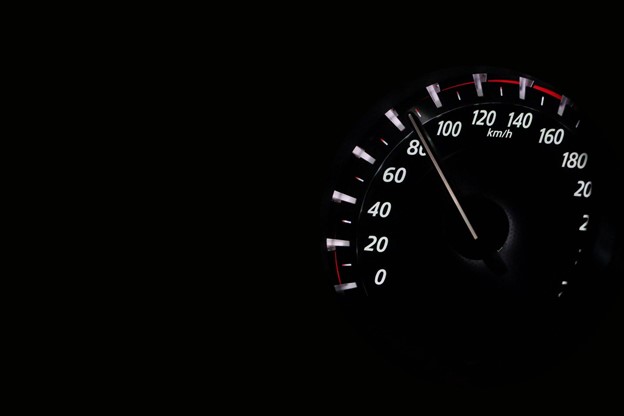5 Tactics To Increase Page Load Speed
A fast page load speed is important to your web visitor but also to Google! Here our tips to speed up your website.

It’s no secret that site and page load speed matter a lot to visitors. Statistics show that users abandon websites if they load too slowly. How slow is too slow?
According to recent data, if a mobile site takes more than three seconds to load, 53% of the visitors will bounce. On desktop, 47% of users expect a website to load in two seconds or less. Despite that fact, 70% of mobile sites take more than five seconds to load.
There’s no need to explain why page speed matters to users. It’s pretty obvious. Waiting for a page to load is frustrating. However, page load speed also matters to Google, and if you’re working towards improving your SEO, or search engine optimization, page load speed needs to be a factor you’re considering.
While Google is vague about how it uses site speed in its ranking algorithm, Google has been using speed as a scoring factor for desktop sites since 2010, and in 2018 started assessing mobile speed too. What we do know is that Google cares about visitor happiness. If your bounce rates are steady, and your page serves the visitors, you’re on the right track. Increasing site speed ensures that you’re doing both.
Moreover, if you’re investing time, money and energy into search engine optimization, the last thing you want is to lose visitors because of laggy load times, so here are five sure-fire tactics to increase page load speed on all your sites.
Tactic #1: Optimize Images
The key to most engaging website designs is high-quality images. However, if incorrectly formatted, those images could be slowing your pages down. Images make up about 21% of your site’s total byte weight and large, unoptimized images can slow your site way down.
The good news is that image optimization is one of the simplest ways to improve site and page load time. Essentially, you want to find the balance between the smallest image size you can have while maintaining quality. The most straightforward way to accomplish this is via image compression.
You can do image compression with programs like Adobe Photoshop, or you can compress your images directly on your website using plugins. Also, choosing the correct format is important, too. Stick with PNG files for graphics and JPEGs for photographs.
Beyond compression and resizing, you can also combine images using CSS sprites. CSS sprites make all your pictures one large image so that it loads at one time instead of separately.

Tactic #2: Compress Files
Images aren’t the only files on your site that take up too much room. Bloated CSS, HTML, audio files, videos, and JavaScript files could be the reason your web site is loading slowly. Compressing files could be as simple as grouping CSS files together or removing HTML code whitespace. Yet according to HostingCanada, an educational resource for business websites and blogs, whitespace is imperative for readability.
However, the most popular way to compress files on your website is through Gzip, which is a file format and software solution. All in all, just like images, you want to ensure that you aren’t slowing download times by having unnecessarily large files.
Tactic #3: Reduce Redirects
When a user is trying to go to a page but is instead sent to another, this is a site redirect. It’s like being given directions to a place, only to get there and realize that you have to turn around and go somewhere else. It’s a waste of time for the server.
Now sometimes redirects are necessary, like if you’ve entirely moved a page or to navigate users from a non-www page to a www-page. However, if there are any redirects that you can remove, you need to do it. Avoid sending users to any page that has a redirect, and also avoid search engine optimizing any pages with redirects.
The fewer redirects your website has, the faster it will run and load.

Tactic #4: Leverage Browser Caching
So, browsers cache websites. What that means is that they store copies of a website’s static content so that when you go back, it doesn’t have to reload the page. Static content includes HTML, CSS, images and JavaScript. As a site owner, you can tell browsers how long the content will be cached.
To maximize your load times, you can leverage browser cache timelines to speed up your site’s load time. Utilizing the power of cache decreases bandwidth consumption, reduces the number of server requests, and overall provides a better user experience.
Like most things on this list, there are a couple of methods for leveraging browser cache. You can modify the .htaccess file via an FTP client. Alternatively, if you’re on WordPress, there are a variety of different caching plugins available.
Tactic #5: Use a Content Delivery Network
A content delivery network or a CDN (also called a content distribution network) could be just what your site needs to speed up load times. A CDN is a distributed server system where you can host your website’s files over a vast network of servers located all around the globe.
This increases your site’s load time by allowing visitors to download files from the server closest to them geographically. Additionally, because the bandwidth is broken up, no server is having to carry a heavy load. CDN servers are like caching points that sync simultaneously all over the globe.
To use a CDN for your site, you simply have to find a service provider and register your site.
Increase Your Page Speed to Reach Your SEO Goals

Page and site speed is essential to your visitors, and it also impacts your SEO, allowing more visitors to spend more time on your site, thus increasing your chance at making a sale and impacting your business valuation. Whether you’re trying to increase engagement and decrease bounce rate, or whether you’re trying to move up the pages of Google, increasing your page load speed is one of the first steps you need to take.
These five tactics are five sure-fire ways to start increasing your site speed today. Try these tactics, and be sure to check your page load speeds throughout the process. You can use Google’s PageSpeed Insights or other free speed checkers around the web. Be sure to check before you start and after each improvement so you can track your progress.
Increasing page load times isn’t always an easy task, but if you commit to getting your load times down, your bounce rates and rankings will dramatically improve.
Skylar Ross is a contributor at Raincatcher and a blogger. His contributing site, Raincatcher, provides useful tools and advice for business owners such as a business valuation calculator, exit planning strategies, and guides to selling your business.
Really Simple Systems is now Spotler CRM
The same great technology, a CRM platform that is focused on the needs of B2B marketers, provided by the same great team, at a great price!